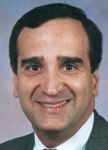- Case-Based Roundtable
- General Dermatology
- Eczema
- Chronic Hand Eczema
- Alopecia
- Aesthetics
- Vitiligo
- COVID-19
- Actinic Keratosis
- Precision Medicine and Biologics
- Rare Disease
- Wound Care
- Rosacea
- Psoriasis
- Psoriatic Arthritis
- Atopic Dermatitis
- Melasma
- NP and PA
- Skin Cancer
- Hidradenitis Suppurativa
- Drug Watch
- Pigmentary Disorders
- Acne
- Pediatric Dermatology
- Practice Management
- Prurigo Nodularis
- Buy-and-Bill
Article
Field therapy important complement for optimal treatment of AKs
Baltimore - Treatment for persons with numerous actinic keratoses (AKs) in an area of severely sun-damaged skin should include field therapy that can clear both the clinically evident lesions and sub-clinical danger spots, according to Anthony A. Gaspari, M.D., speaking at the East Coast Dermatology Seminar, here.
Baltimore - Treatment for persons with numerous actinic keratoses (AKs) in an area of severely sun-damaged skin should include field therapy that can clear both the clinically evident lesions and sub-clinical danger spots, according to Anthony A. Gaspari, M.D., speaking at the East Coast Dermatology Seminar, here.

"We know from studies of genetic tumor markers that AKs lie in a continuum spanning the spectrum from sun-damaged skin to frank squamous cell carcinoma. That information provides a scientific rationale for using field therapy to treat the entire area of sun-damaged skin in order to prevent the evolution of genetically altered cells into new clinically evident AKs and, ultimately, invasive skin cancer."
Several options are available for field therapy.
The most commonly used include topical 5-FU (5-fluorouracil, Efudex, Valeant Pharmaceuticals; Fluoroplex, Allergan; Carac, Dermik); imiquimod 5 percent cream (Aldara); diclofenac sodium 3 percent gel (Solaraze, Bradley Pharmaceuticals) and photodynamic therapy (PDT).
While differing in their mechanisms of action, each of these modalities can be highly effective. In addition, all can be expected to cause some degree of irritation or inflammation during treatment, but they also consistently afford a favorable safety profile and good cosmetic result.
"Which agent among these is preferable depends on the individual situation, and the bottom line is that dermatologists have a range of options in their toolboxes that will enable them to customize their approach according to patient needs," Dr. Gaspari says.
"Once treatment is stopped, the area heals completely within 1 to 2 months, and the diseased skin is ultimately replaced by healthy, normal-looking skin," Dr. Gaspari says.
Efficacy rates are not reported in the prescribing information for the 1 percent topical cream and solution products (Fluoroplex). For Efudex, approximately 80 percent of patients treated with the 2 percent solution, 5 percent solution or 5 percent cream for AK lesions on the head and neck achieved a complete response and another 10 to 20 percent had a partial response. A study evaluating the 0.5 percent fluorouracil cream (Carac) showed that up to 60 percent of patients using that agent once daily for up to four weeks to treat AKs on the face or scalp achieved complete clearance when assessed four weeks after treatment.
According to the prescribing information, imiquimod should be applied twice a week for 16 weeks. In the pivotal clinical trials that led to its approval, about 45 percent of patients in the imiquimod group but only 3 percent of vehicle controls achieved complete clearance (had no clinically visible lesions) when evaluated eight weeks following treatment cessation. Outcomes for partial clearance (≥75 percent lesions cleared) also significantly favored imiquimod over vehicle, 59 vs. 12 percent, respectively. Patients enrolled in those studies had four to eight visible, nonhyperkeratotic, nonhypertrophic AKs on the face or scalp.





